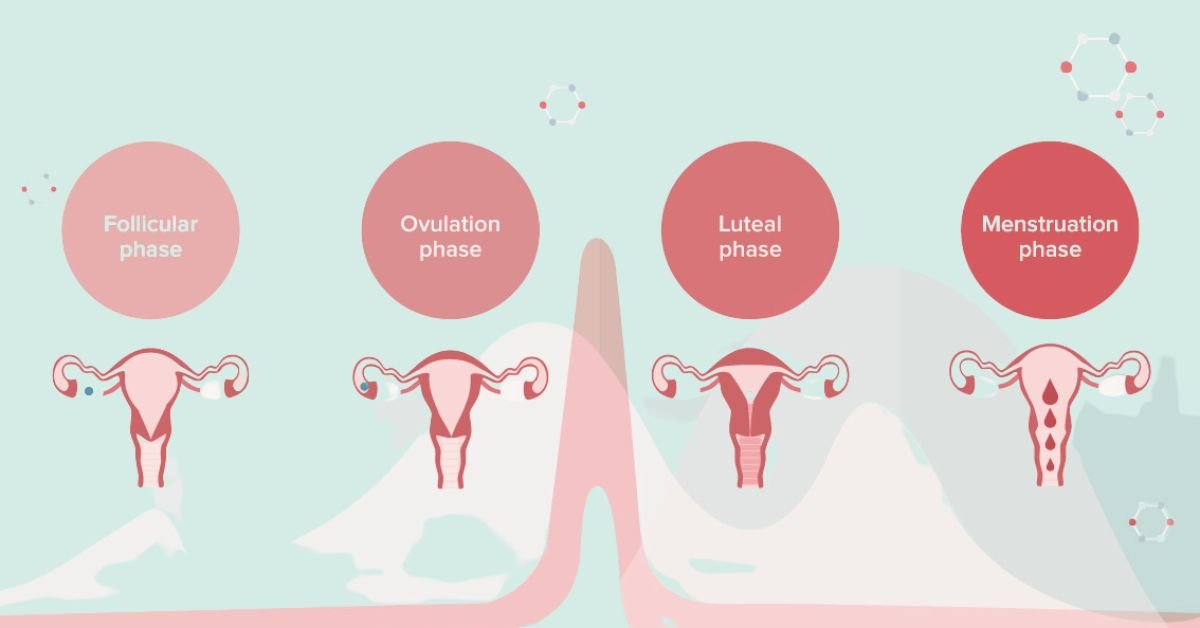THE FOUR MENSTRUAL CYCLE PHASES

The menstrual cycle consists of several phases, including:
1. Menstruation:
This is the first phase and involves the shedding of the uterine lining, resulting in vaginal bleeding. It typically lasts 3-7 days.
2. Follicular Phase:
This phase begins after menstruation. The pituitary gland releases follicle-stimulating hormone (FSH), which stimulates the ovaries to develop follicles, each containing an immature egg. This phase can last about 7-21 days.
3. Ovulation:
Around the middle of the menstrual cycle, a surge in luteinizing hormone (LH) triggers the release of a mature egg from one of the follicles in the ovary. This is when a person is most fertile.
4. Luteal Phase:
After ovulation, the ruptured follicle transforms into the corpus luteum, which produces progesterone. This hormone prepares the uterine lining for possible pregnancy. The luteal phase lasts about 12-16 days.
5. Pre-menstrual Phase:
If pregnancy doesn’t occur, the corpus luteum degenerates, progesterone levels drop, and the uterine lining starts to break down. This leads to symptoms like PMS, and it marks the approach of the next menstrual period.
The length of each phase can vary from person to person, but a typical menstrual cycle is around 28 days, with day 1 being the first day of menstruation.

